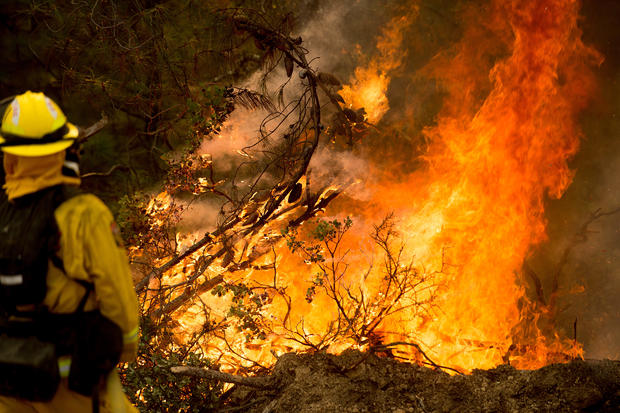Nearly 2 million western homes face "severe risk" of fire
If Arizona, California and other U.S. states seemed almost to be bursting into flames during fire season this year, 2017 could get even hotter.
Real estate analytics firm CoreLogic shows that that 1.8 million single-family homes across 13 Western states are at “extreme or high risk” of damage from wildfires, with the total cost to repair approaching $500 billion. An additional 27 million properties in those states, with an estimated $6.7 trillion value, also face some risk of damage, the report added.
Despite the threat, home builders continue to erect housing in fire-prone areas, including tinderbox forests in hilly areas that have not seen much rain in years and where fighting fires on the ground is hazardous.
“The overall threat of wildfire has increased since 2015, in large part because of new construction in areas already at risk of wildfire,” said Tom Jeffery, CoreLogic’s senior hazard scientist. “In California, drought conditions have contributed to the increased wildfire risk in that region.”
CoreLogic’s figures for homes at risk have risen dramatically since 2015, when it expanded its analysis to include single-family houses, mobile homes and duplexes. That year it showed just 900,000 single-family homes at severe risk with a reconstruction value of “only” $237 billion.
CoreLogic’s scorecard showing homes at risk indicates not only the susceptibility to wildfire, but also the risks associated with property located in “close proximity” to adjacent high-risk properties. That’s because high winds like California’s infamous “Santa Ana” can send burning embers high into the air and landing miles away.
The $500 billion in potential property losses doesn’t include the cost in lives, injuries or the expenses associated with firefighting. The number represents estimates of reconstruction costs, taking into account labor and materials, and assumes total destruction of a residence, which as CoreLogic notes in a report may not always be the case.
However, construction costs continue to escalate, particularly in regions denuded by fire and flood.
By state, California and Texas rank first and second for the total number of homes in the extreme risk category, due to the high number of residential properties combined with the nearness of high-risk vegetation and terrain.
For specific areas, the Riverside-San Bernardino-Ontario area of California is rated as the most vulnerable to wildfires, followed by the Sacramento, California, suburbs and the Denver-Lakewood region in Colorado.
The CoreLogic analysis suggests that man’s worst enemy in fighting fires is man himself. Rampant development has made many areas off-limits to normal fires that used to thin out brush, and therefore prevent future fires. By putting out these fires, firefighters say we have created the “fire paradox,” which leaves fuel in place for the next conflagration.
Studies like CoreLogic’s are almost certain to create an impetus for raising home insurance rates in these western states, as property and casualty insurers pay for current losses in preparation for what is almost sure to happen.
